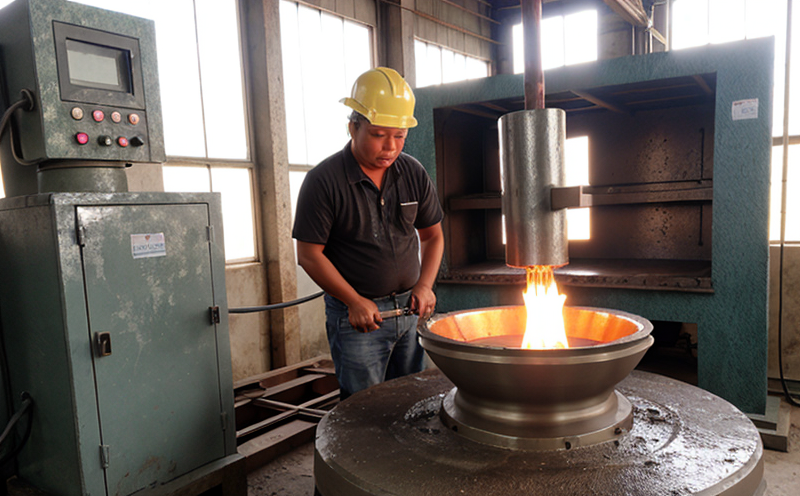ISO 8102 Computed Tomography Testing of Cast Metals
The ISO 8102 standard provides a comprehensive framework for non-destructive testing (NDT) using computed tomography (CT) technology. This service specializes in the inspection and evaluation of cast metals, ensuring that critical industrial components meet strict quality and reliability standards.
Computed Tomography is an advanced imaging technique that allows for detailed cross-sectional views of internal structures within a component. For cast metals, this means inspecting intricate geometries such as cores, gates, and risers without damaging the part. The process involves precise scanning to detect defects like porosity, cracks, shrinkage, and slag inclusions.
The testing procedure begins with specimen preparation, ensuring that the casting is clean and free from external contaminants which could interfere with imaging accuracy. Once prepared, the cast metal component is placed inside a CT scanner. The scanner emits X-rays at various angles around the part, capturing multiple images that are then reconstructed into detailed three-dimensional (3D) models.
These 3D models provide a comprehensive view of the internal structure, enabling precise defect identification and quantification. This level of detail is invaluable for quality assurance in industries where even minor defects can compromise safety or functionality. The service adheres to ISO standards such as ISO 8102:2017, which specifies requirements for computed tomography testing of cast metals.
The use of CT technology allows for the detection and classification of various types of defects, including porosity, shrinkage cavities, cracks, and slag inclusions. The ability to visualize these defects accurately is crucial for preventing failures in critical components such as engine blocks, turbines, and structural elements in aerospace and automotive applications.
The process also facilitates the assessment of material density variations, which can indicate manufacturing inconsistencies or quality issues. This level of inspection ensures that cast metals meet not only industry standards but also customer-specific requirements for performance and durability.
Once the CT scan is completed, the data is analyzed to generate a detailed report that includes defect locations, sizes, and types. The report serves as an essential tool for quality control teams, R&D engineers, and compliance officers to make informed decisions regarding product design and manufacturing processes.
Applied Standards
The testing adheres strictly to ISO 8102:2017, which provides a standardized approach for computed tomography inspection of cast metals. This standard ensures consistency and reliability in the testing process.
- ISO 8102:2017 – Non-destructive testing (NDT) of castings using computed tomography
Benefits
The use of ISO 8102 Computed Tomography Testing offers numerous benefits, including:
- Non-destructive assessment of internal structure and defects in cast metals.
- Precision defect detection and quantification, ensuring compliance with industry standards.
- Early identification of manufacturing flaws to prevent costly rework or product failures.
- Accurate material density analysis for improved quality control.
- Data-driven insights for continuous improvement in casting processes.
Quality and Reliability Assurance
Ensuring the reliability of cast metals is critical to industrial manufacturing. Quality assurance through computed tomography testing involves several key steps:
- Preparation: Cleaning and inspecting the casting to ensure accurate CT scanning.
- Scanning: Utilizing high-resolution CT technology to capture detailed images of internal structures.
- Data Analysis: Using specialized software to reconstruct 3D models for defect identification and quantification.
- Reporting: Delivering comprehensive reports that include defect locations, sizes, and types.





